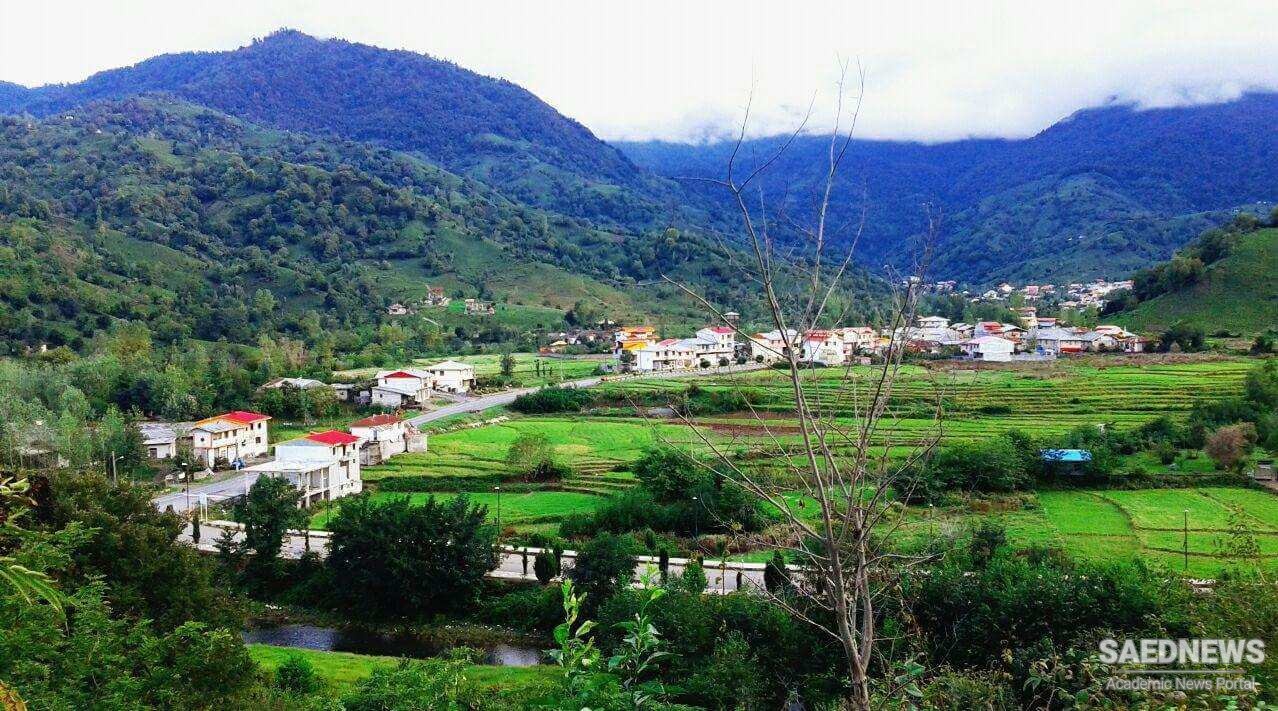To the south of the Caspian Sea, lies the wonderful green Gilan Province (Persian: استان گیلان, [Gīlān]). The people of Gīlān are among the most cheerful and noblest groups of Iranian people, who have preserved their beliefs and traditions.
To Iranians, Gīlān is associated with images of the rice fields, tea farms and enchanting forests. The people of Gīlān speak Gīlaki dialect. Their local music is to a large extent influenced by their surrounding environment and farming activities.
Wood Handicrafts is one of the main handicrafts of this. They include bowls, plates, spoons, forks and other dishes which are sold inside and outside of Gīlan. Other artistic wood works include walking sticks, cradles, bird and animal statues, wood carvings and special boxes called Bolaki. Weaving straw mat is another common handicraft of Gīlān. The products are mostly hats, baskets, table cloth and blinds.
Rice Fields
Rice is the most important farm product of this province, thanks to its favorable climate conditions and fertile soil which have made Gīlān the largest producer of rice in Iran.
Anzali Lagoon
This lagoon is a habitat to local and migrating birds. It is one of the most beautiful sceneries in this province. The sceneries consist of small islands, cane fields and morning glory flowers.
Gīlān Forests
These forests are beautiful natural sceneries situated on the foothills of Alborz Mountains. These forests are characterized by the great variety of their green life. All forests in Gīlan are covered with lawn. The forests of Sāravān, Tālesh, Deilamān and Lāhījān are among the most beautiful ones.
Caspian Sea Beaches
As this province is located at the south of the Caspian Sea, it has a lot of attractive sandy beaches bordering the forests. They are perfect places for swimming, boat-riding and other water sports and activities.
Tea Farms
Heavy rainfalls and high humidity in this province have caused many people to be involved in the planting of tea, especially on hills and foothills of the mountains. Gīlān province is the largest producer of tea in Iran.
Māsūleh Village
This village which is one of the most visited traditional and natural sites of Gīlān is located 65 kilometers southwest of Rasht city. The importance of this village lies in its unique architecture: the roof of a house is the yard of the house above and also the pavement in the village.
Gīlān Wrestling
Gīlemardi wrestling reflects bravery of the residents in this region. This kind of wrestling is usually held during summers, special occasions, or feasts in a place called Sabzemeydān.
Fishing in Gīlān
The Caspian Sea plays an important role in the economic activities of the inhabitants in Gīlān. Fishing and fishing industries are crucial economic resources for the people.
Mārlīk Hill
This hill is located in Rahmat Abad region of Rūdbār and was first excavated by Iranian Archeologist Dr. Ezatollāh Negahbān. 53 gravestones, many clay dishes and gold objects belonging to 2000 B.C. were discovered in this hill.
Rūdkhān Castle
Also known as Hesami Ghaleh, the castle dates back to the Sassanid era (224-651). It is located 12 kilometers south of the town of Fūman in the heart of a dense mountainous forest. With an area of 50 thousand square meters, this is the largest and most magnificent castle in Gīlān. It consists of two parts: a citadel and home of the royal family.
Gīlanī Dress
There are various climate conditions in this province, so women’s clothing differs from place to place. In mountainous regions they wear long clothing as protection against cold weather. In forests and areas near seaside and beaches they wear shorter clothing, but they are all colorful and attractive clothing.


 Fars Province: the Land of Poem and History
Fars Province: the Land of Poem and History














































